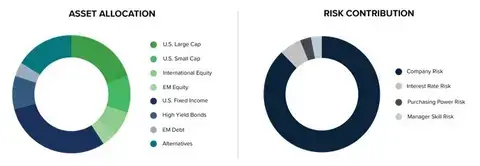According to a recent AICPA study, the number one concern for their clients with respect to retirement planning is running out of money. In fact, 30% of their clients listed it as their top concern.
It’s understandable, and it’s a fear that’s exacerbated by the many unknowns surrounding retirement. The length of your retirement, volatility in the markets and shifts in public policy are all threats that are largely out of your control. All these factors have the potential to jeopardize your long-term financial stability.
Even the age you retire is often something that you may have little control over. For instance, you may plan to work until age 67, but if you suffer a severe illness or disability at age 58, that may force you into retirement nearly 10 years earlier than you had been planning for.
While many of the threats to your financial security are outside of your control, strategies that can limit their impact are within your grasp. Discover three of the most frequent reasons people run out of money in retirement and find out what you can do to limit the chances they’ll significantly affect you.
1. Diversify Your Assets
We’re big believers in diversification–the idea of spreading investments across different asset classes. Even though a diversified portfolio doesn’t guarantee that your returns will be enhanced or perform better than a non-diversified portfolio, it will likely help reduce the riskiness of your portfolio.
Many investors assume they’re diversified if the pie chart detailing their holdings has lots of different asset class slices. This is often too simplistic, as your different holdings may be exposed to the same underlying risk. These risks may include company risk, inflation risk and interest rate risk. Figure 1 below shows that while your assets may be diversified, your risk contribution is not.
Figure 1

Rather than simply having lots of different asset classes, make sure the underlying risks of those investments are diversified. This often takes a professional’s advice.
2. Don’t Leave Social Security Benefits on the Table
Social Security will likely pay a critical role in your plans for retirement, but considering how complex it is, it can be hard to maximize your benefits. Claiming too early can leave you with reduced benefits, while finding additional sources of income after you retire, like working a part-time job, can cause your benefits to be taxed. There are more than 2,700 rules for claiming your benefits and nearly 600 different ways to claim, so it’s difficult to determine your best possible option.
Once you make your claiming decision, there’s often little that can be done to reverse it. That’s why it’s critical to speak with a financial advisor who can walk you through the different claiming options available to you and run the numbers to help you estimate what will likely be the best time to begin receiving benefits.
3. Create a Withdrawal Strategy
How much you can withdraw from your savings to finance your retirement can be a delicate balancing act. Withdrawing too much too early in retirement can significantly increase the odds that you’ll run out of money during the later stages of retirement. And if there’s a sudden bear market and the price of equities decreases early in retirement, it could flip your retirement spending strategy on its head.
Planning ahead with a financial advisor can give you a good indication of how much you can withdraw from your savings every year–conventional wisdom says about 4%, but that number varies for each person. Your advisor can also help you diversify your investments based on your time horizon by keeping money needed for the short term in liquid, safer investments while exposing your long-term money to growth in order to help increase the longevity of your savings.
There are no crystal balls when it comes to financial planning. No one knows how much money you’ll need to finance the duration of your retirement. As advisors, we know through our experience working with clients that educating yourself on what is in your control and what isn’t can help increase your chances of success.
With a bit of preparation, you’ll be able to increase the chances your nest egg will be there for you whenever you need it. Reach out to a financial advisor to see what you can start doing today to benefit your tomorrow.
The opinions voiced in this material are for general information only and are not intended to provide specific advice or recommendations for any individual. No strategy assures success or protects against loss. There is no guarantee that a diversified portfolio will enhance overall returns or outperform a non-diversified portfolio. Diversification does not protect against market risk.

